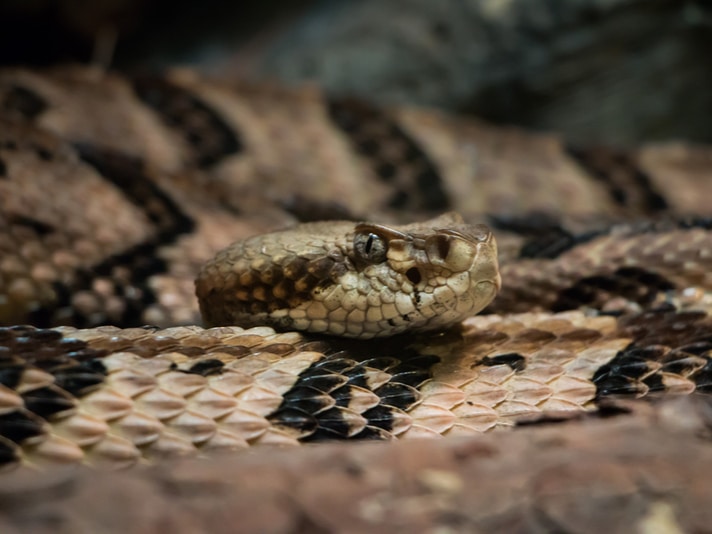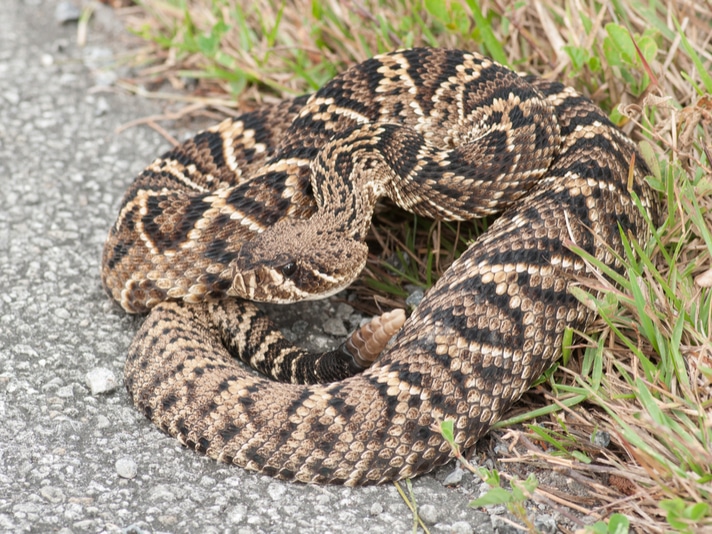The researchers exposed the rodent serum samples to warm temperatures (85 degrees Fahrenheit/29.5 degrees Celsius) and cooler temperatures (70 degrees Fahrenheit/21 degrees Celsius) and found that the warmer serum samples hindered the venom’s activity.
Snake venom potency can be influenced by the weather and the prey that venomous rattlesnakes snakes eat, according to a research paper put out by the University of Michigan Life Sciences Institute. The university researchers, along with those from the University of Nevada Reno and the University of Utah studied how blood serum samples of wild Desert woodrats (Neotoma lepida) have evolved to resist rattlesnake venom. These rodents can survive from 500 to 1000 times the amount of venom that kills a lab mouse, the researchers said.
“Even across different populations of the same snake species, eating the same prey, we see evolutionary differences in their venoms,” Matthew Holding, Ph.D., lead author of the study and an evolutionary biologist in the University of Michigan Life Sciences Institute. “With this study, we really wanted to dig into what drives these differences in the natural coevolutionary arms races between the snakes and their prey.”

Timber rattlesnake. Photo by Shutterstock
The researchers exposed the rodent serum samples to warm temperatures (85 degrees Fahrenheit/29.5 degrees Celsius) and cooler temperatures (70 degrees Fahrenheit/21 degrees Celsius) and found that the warmer serum samples hindered the venom’s activity when compared to the cooler samples.
“These were samples that were drawn in Utah and then frozen, thawed back out, and analyzed at the same room temperature here in Michigan — and we could still see a significant difference between rats from the cold and warm groups,” Holding said in a press release put out by the university. “That tells us that it’s the actual content of their blood that is changing in response to environmental temperature, and it leads to large differences in the ability of that blood serum to inhibit snake venom.”
The researchers also fed the woodrats rat chow that they wouldn’t normally eat and compared them with rats fed a diet they would consume in the wild, which is made up largely of the creosote bush, a fairly toxic plant that the rats are able to eat. They determined that the serum of the rats that consumed the creosote was less effective in inhibiting the rattlesnake venom.
“In both the temperature and diet tests, there appears to be a physiological trade-off to deal with the various forms of stress to the animal,” said Denise Dearing, Ph.D., distinguished professor of biological sciences at the University of Utah and senior author of the study. “If the animals are dedicating energy to staying warm or to digesting a toxic diet, they may have less energy available for producing these venom-resistant proteins. And turning on their internal heater to stay warm seems to exert a larger physiological cost in terms of venom resistance.”
More Rattlesnake Venom Studies
Several studies have pointed to interesting factors with regard to rattlesnake venom and prey choice. In 2016, a researcher at California Loma Linda University believes that the venom of the Southern Pacific rattlesnake (Crotalus oreganus helleri) is more potent in the San Jacinto Mountains of Southern California, than those found in the San Gabriel and San Bernardino Mountains because of the abundance of the Granite spiny lizard (Sceloporus orcutti) in the San Jacinto mountains versus the other two mountain ranges. Dr William Hayes of Loma Linda University believes there is a link between the high potency of Southern Pacific rattlesnake venom and the Granite spiny lizard, its primariy diet in the San Jacinto Mountains of California.
Granite Spiny Lizard Diet May Factor in More Potent Southern Pacific Rattlesnake Venom
And a 2015 research paper noted that Eastern diamondback rattlesnake venom is genetically different based on location. With the Eastern diamondback rattlesnake, the genetic makeup of the venom of one snake collected in the Everglades was distinctly different from the venom collected from the same species of snake in the Florida panhandle, which is about 500 miles from the Everglades. The researchers found that two venom components, one which causes paralysis, was found in high levels in the northernmost populations of the snake but were nonexistent in the venom of the snakes on Caladesi Island along Florida’s Gulf Coast. You can read more about that study here.
“The study of venoms and the animals that resist them has uncovered some very potent pharmacologically active molecules and has led to the development of medications like anticoagulants and even Ozempic,” Holding said. “I’m really interested in the basic science of how the environment can impact coevolutionary relationships between snakes and their prey from one location to another. But it can also lead to the discovery OF powerful molecules that may have other important applications.”
An abstract of the study, “Ambient temperature and toxic diets constrain snake venom resistance in a desert rodent” can be read on the Biology Letters website.


